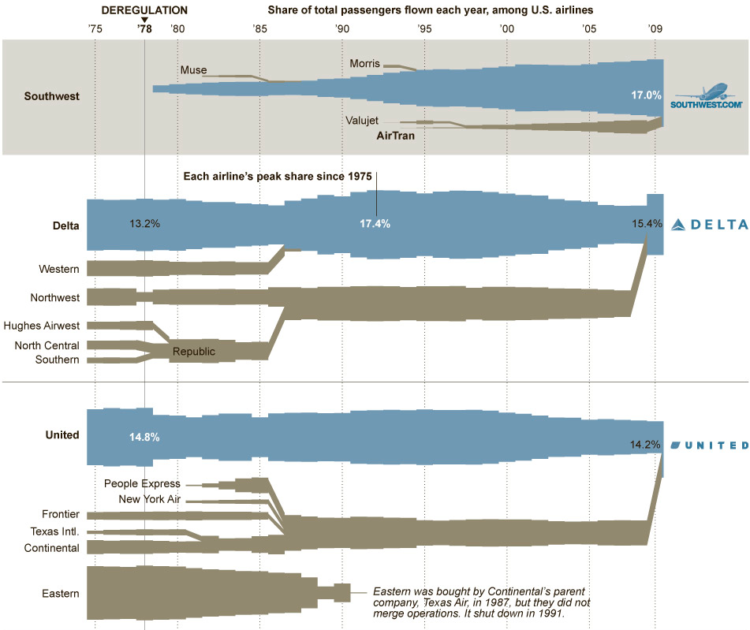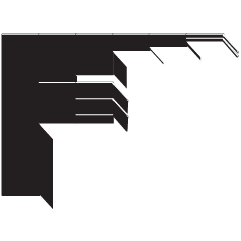Airlines have been merging, going out of business, and growing since forever. Karl Russell for The New York Times shows just how much change there’s been during the past few decades:
The deregulation of the airline industry in 1978 led to a wave of mergers that continues to this day. But even as the legacy carriers have been consolidating and growing, they have been losing market share to low-cost carriers. Two of them, SouthWest and AirTran, have just agreed to merge and carried the most passengers in 2009 combined.
The thickness of each flow represents the share of passengers during a given year forming a blockish Sankey diagram. Brown flows are those that were absorbed by a larger airline.
It looks like anyone who’s not JetBlue, Southwest, or Alaska Airlines can only survive with mergers. I wonder why. [New York Times]




Say you wanted to make an infographic like this. How would you recommend going about it? Any software or other tools come to mind?
Personally, I’d make bar graphs in Illustrator or R, and then center the bars in Illustrator. Then since there aren’t that many connections, I’d do that manually. I’m pretty sure that’s how this was done, given the jagged edge for each year.
Hey thanks for the response. That’s kind of what I was thinking as well, but you do alot of great stuff so I’m always interested in other perspectives and ideas. I’m only mildly acquainted with R. Do you have any preferred reference materials? Last question! I promise.
@Josh – I like ‘R Graphics’ by Murrell, but it’s more low-level and how to use the actual R graphics engine and doesn’t cover useful packages. There’s also this beginner’s guide [pdf]:
http://cran.r-project.org/doc/contrib/Paradis-rdebuts_en.pdf
Then there’s the eventual FlowingData book :)
Right on! How do I reserve my copy?
Hi Josh and Nathan,
That is exactly how I did it. It didn’t take that long either … I tried other fancier forms, but often, the simpler the better. And thanks for the interest!
Cheers//Karl
@Karl – And darned good job you did. Thanks for the confirmation!
Many thanks Nathan. Cheers.
Karl,
Great advice. And this is why I love the internet.
Awesome graphic!!! I can add some context about the airline industry. Why Southwest, JetBlue, and Alaska haven’t merged? Southwest started as a very low-cost carrier in Texas and slowly expanded with that same low-cost mentality. In the 80’s and 90’s, the legacy airlines were “full service” and didn’t want to be like Southwest. Sophisticated data analysis (forecansting and yield management) allowed the legacy airlines to compete with Southwest without giving away all their seats at cheap preices. So, Southwest only merged with tiny carriers at the time.
Alaska has a great niche serving Alaska. It required specially equipped planes and specially trained pilot at many of the smaller Alaskan airports. Although the legacies have tried at times, the costs were too high competing with Alaska. Alaska also has made codeshare alliances with many legacy airlines (Delta, American, etc.), which allows it to make money without the need to merge.
Finally, JetBlue is a relative newcomer, but importantly set up a hub in NYC — the largest population base in the country. So far, it has not needed to merge but recently announced a major codeshare deal with American.
Pingback: Daily Digest for December 16th